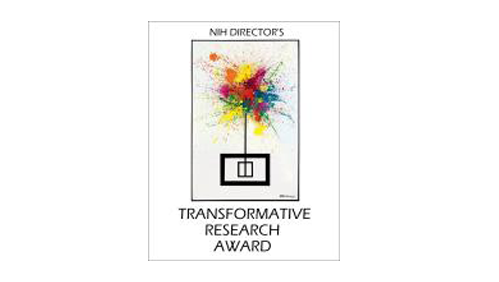
All life on earth contains DNA, which houses the chemical building blocks (or nucleic acids) adenine (A), cytosine (C), thymine (T) and guanine (G). These four nucleic acids store information within the DNA, but whether systems with different numbers or types of building blocks can also support life is an open question. Transformative Research Awardee, Dr. Steven Benner, and his team have, for the first time, built a DNA code out of eight letters, challenging traditional ideas about the nature of life and creating new possibilities for information storage.
To explore whether the DNA alphabet could be expanded, researchers used synthetic biology to design four additional nucleic acids that behaved like the original A, C, T and G. When all eight building blocks were combined, they formed a new construct the researchers termed “hachimoji DNA,” based on Japanese words for ‘eight’ (“hachi”) and ‘letters’ (“moji”) which appropriately describe this novel genetic code. The team then tested whether hachimoji DNA adhered to basic principles necessary to support life. First, they established that the set of bases faithfully bound to each other in a predictable pattern, demonstrating they could act as an information storage system. Second, they showed the overall DNA structure was retained even when the bases were reordered, proving the structure was both stable and changeable. Finally, the team confirmed the synthetic DNA could be copied into a functional RNA molecule, a process necessary for transmitting information. Taken together, the experiments demonstrated an eight-letter genetic code could potentially support life as we know it.
These initial studies are only a starting point, and more work is necessary to determine how similar this synthetic DNA is to natural DNA. For example, researchers still need to confirm whether hachimoji DNA can be replicated like natural DNA. However, the hachimoji DNA was able to accurately store and transmit information, showing the technology has potential applications for the storage and retrieval of digital data. Ultimately, the study is a first step in envisioning other types of “living” structures that might exist outside of earth.
Reference
- Hachimoji DNA and RNA: A genetic system with eight building blocks. Hoshika S, Leal NA, Kim MJ, Kim MS, Karalkar NB, Kim HJ, Bates AM, Watkins NE Jr, SantaLucia HA, Meyer AJ, DasGupta S, Piccirilli JA, Ellington AD, SantaLucia J Jr, Georgiadis MM, & Benner SA. Science 2019 Feb 22;363(6429):884-887.
In the News
- Four new DNA letters double life’s alphabet
Nature - DNA Gets a New—and Bigger—Genetic Alphabet
The New York Times



